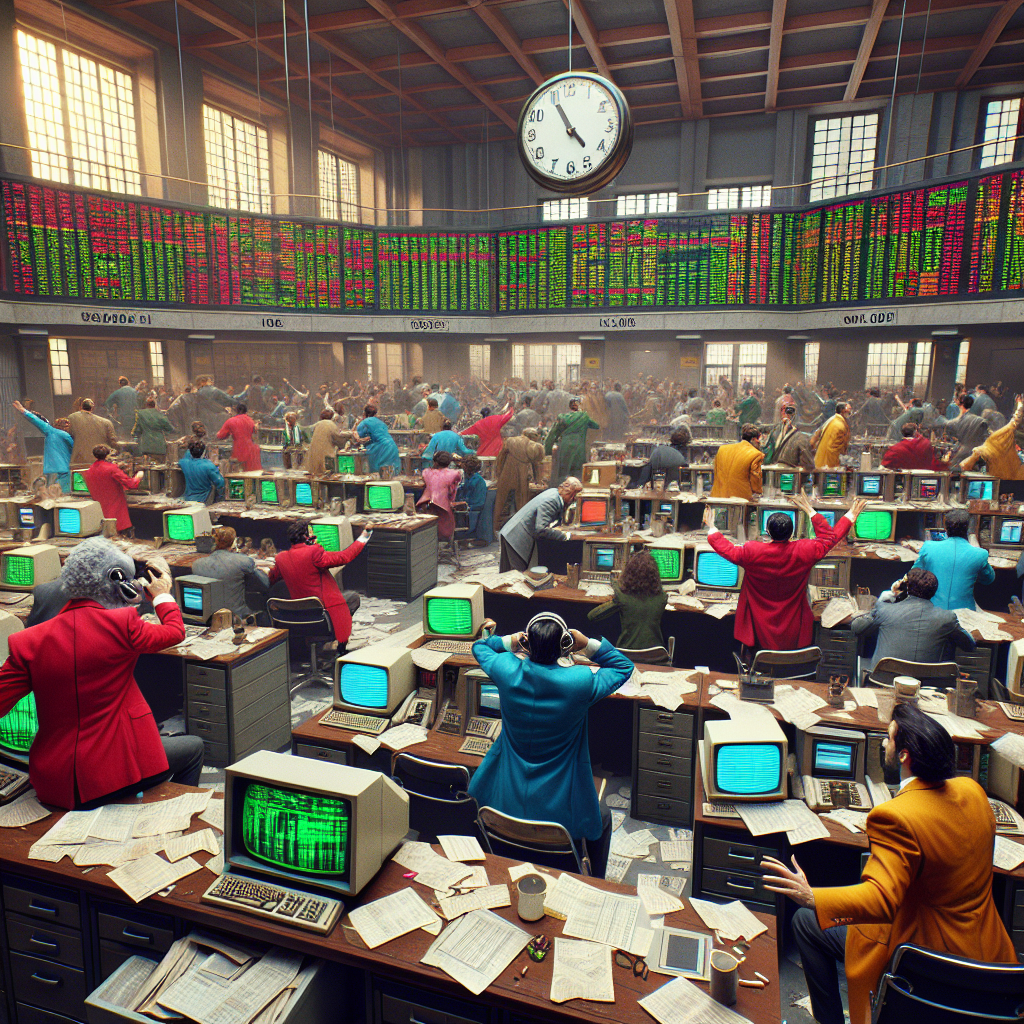Futures vs Options on Futures: Which Is Better?

When entering the world of futures trading, one decision every trader faces is whether to focus on standard futures contracts or options on futures. Understanding futures vs options is foundational for anyone looking to seriously pursue trading. Understanding their strengths, differences, and limitations can help you make smarter choices and manage your risk more effectively. Whether you are a new trader or honing your strategies for the next market move, knowing when to use each instrument is essential for success.
Choosing between futures and options is more than just picking a trading style. Futures contracts can offer direct exposure to price movements, while futures options provide flexibility with defined risk. This topic matters because making the wrong choice can significantly impact your trading account, both in terms of profits and losses. On the other hand, the right choice aligns with your risk tolerance, trading goals, and time commitment. Instead of gambling on the unknown, mastering the difference between futures and options opens a pathway to consistent returns.
Introduction to Futures and Options
At the heart of derivatives trading are two principal instruments: futures contracts and options on futures. These products serve as essential building blocks for market speculation, hedging, and risk management across global markets.
A futures contract is a standardized agreement to buy or sell an asset, such as crude oil, corn, or a financial index, at a predetermined price on a specified future date. Futures contracts are actively traded in exchanges and their prices shift based on supply, demand, and the perceived future value of the asset. This structure makes them appealing to traders seeking pure price exposure without owning the underlying asset.

What Are Futures Contracts?
Futures contracts are one of the most fundamental trading tools in derivative markets. At their core, these contracts are legal agreements to buy or sell a specific asset (such as commodities, indexes, or currencies) at a predetermined price and date in the future. Standardized by exchanges, futures contracts serve as a cornerstone for everything from speculation to risk management.
How Futures Work in Real Markets
A practical example: Suppose you are a wheat farmer. In May, you are concerned the price of wheat might fall by harvest time in September. To protect your income, you can sell a wheat futures contract that locks in a sale price today. If the market price drops in September, your futures contract enables you to sell at the higher agreed price so your bottom line is protected.
Pros and Cons of Futures
The key advantage of the futures contract is its efficiency. Futures offer high liquidity and tight bid-ask spreads, making it easy for traders to enter and exit positions. The leverage built into these contracts lets you control large assets with relatively little capital, multiplying potential profits.
However, leverage is also a double-edged sword. Just as it amplifies gains, it can magnify losses quickly if the market moves against you. The obligation to fulfill the contract terms means traders must maintain required margin levels or face forced liquidation.
Futures also have standardized terms. While this ensures fairness and transparency, it limits customization. You cannot negotiate dates, quantities, or prices outside the exchange-determined amounts.
One downside to futures is that they expose traders to potentially limitless losses. If a position moves deeply out of favor, the financial impact can be overwhelming. For this reason, risk management is critical.
What Are Options on Futures?
While a futures option is based on a standard futures contract, it introduces flexibility and defined risk. In options vs futures discussions, futures are often favored by traders seeking advanced strategies and lower capital risk exposure.
The Structure of an Option Contract
An option contract on a futures contract gives the buyer the right, but not the obligation, to buy or sell the underlying futures contract at a specified strike price, before a certain expiration date. There are two types of options: call options (the right to buy) and put options (the right to sell). Each option contract is linked to a specific underlying futures contract.
Trading Options on Futures
Trading futures options gives you a flexible approach to the markets. Unlike futures contracts, you’re not obligated to take delivery if the trade doesn’t go in your favor. You can choose to exercise the option or simply let it expire. For many traders, the opportunity to construct intricate strategies using both calls and puts provides an attractive way to balance potential returns and risk.
For instance, an investor anticipating a small move in gold prices might sell a straddle, using both a call and a put option to collect premium. If gold stays within a certain range, the strategy profits from time decay. More advanced traders might deploy spreads by buying one option and selling another, thus limiting both risk and reward.
Futures options trading is popular with those looking to hedge, speculate, or implement complex risk/reward profiles. Spreads, straddles, and combinations offer a toolkit for nearly every market outlook. Information on platforms that support robust options features is key to accessing these markets.
Core Differences of Futures vs Options
Understanding the difference between futures and options is crucial for traders aiming to select the right instruments for their portfolios. Although both futures and options belong to the same family of derivative products, their behavior, obligations, and risk profiles are fundamentally distinct.
Obligation vs Right
A futures contract is an obligation. Once entered, both buyer and seller are legally bound to the agreed-upon terms. For example, if you buy a crude oil futures contract, you must either accept delivery (rare for most retail traders) or offset the position before expiration. There’s no room for second-guessing once you’re in.
Cost, Risk, and Reward
Trading futures requires posting margin, not just the full contract value. The use of margin means your gains or losses are magnified, as you can control large positions with a small deposit. However, if the market moves sharply against you, you may lose more than your initial margin.
With futures options, cost is capped at the premium you pay for the contract. There are specific strategies, such as covered calls and protective puts, that can further define and limit possible outcomes. This makes options particularly useful for hedgers or those seeking limited risk.
Key Similarities Between Futures and Options
Despite their differences, futures and options share several common traits. Both are derivatives, which means their value is drawn from an underlying asset like crude oil, gold, or a stock index. Because they’re traded on standardized exchanges, both come with regulated terms and high liquidity.
Both instruments let traders take positions on assets without owning them outright. For instance, investors can speculate on price movements of commodities, hedge exposure to risky markets, or lock in prices for future needs. The standardized nature of these contracts makes trading accessible and reduces the uncertainty of terms.

Futures Option vs Futures Contract: How They Work Together
Many traders and investors don’t simply choose futures or options—they combine both for a more sophisticated approach. Utilizing both futures option vs futures contract in a portfolio gives flexibility to adapt to changing markets.
For example, suppose a trader holds a long position in a futures contract, expecting prices to rise. Concerned about potential losses, the trader can buy a put option on the same futures contract. This is a classic hedging strategy, often called a protective put. If prices fall, gains from the put option offset losses on the futures position.
Conversely, option strategies can act as standalone trades or supplement existing futures holdings. For instance, you might sell a call option on a futures contract you already own, aiming to earn premium income if you think the price will remain steady or decline.
Trading Futures vs Options: Which One Fits You?
Choosing between trading futures and options is often a personal decision. It depends on your goals, risk profile, time commitment, and trading style. Here’s how these trading vehicles align with individual trader needs.
Futures for Active Traders
Futures are ideal for active traders who want direct exposure to price movements. These contracts require ongoing monitoring and quick decision making. Many day traders, scalpers, and high-frequency traders prefer futures because of their high liquidity, tight spreads, and leveraged returns.
With futures, traders can enter and exit positions rapidly, take advantage of small price changes, and deploy automated strategies. The clear, linear structure of profit and loss appeals to those who want to know exactly where they stand at any moment.
Options for Flexible Traders
With options, you can build positions that profit from a range of scenarios: market rise, decline, or stagnation. The ability to use combinations of calls and puts, spreads, and other options structures makes this vehicle ideal for those who want flexibility.
Options are well-suited to swing traders, hedgers, and portfolio managers. Because your maximum loss is limited to the upfront premium, you can participate in markets with less risk of a catastrophic loss. Many investors use options to protect portfolios, generate income, or speculate with specifically defined outcomes.
How to Start Trading Futures Options
If you’re ready to try your hand at future option trading, there are practical steps to follow. Each step is crucial to building a foundation that lasts beyond trends and market cycles.
Step 1: Choose a Trusted Brokerage or Platform
Your trading journey begins with a reliable brokerage or platform. Look for ones that offer access to major futures exchanges, strong support for competitive fees, and intuitive trading interfaces. Make sure they offer educational resources and demo accounts.
Step 2: Understand Margin and Leverage
Margin and leverage requirements differ for futures and options. Futures contracts typically require a higher margin deposit, while options premiums are paid upfront. Understand how margin works, liquidation policies, and the potential for margin calls.
Read your broker’s risk disclosures, and plan trades with capital at risk you can afford. Proper leverage can enhance returns, but unmanaged leverage can destroy accounts quickly.
Step 3: Learn the Contract Specs
Futures and options contracts are standardized, but each has unique specifications. Study the tick size, tick value, minimum price movement, contract size, and expiry dates before trading.
Explore contract specification sheets on major exchange websites, as these documents provide the granular details that inform smart position sizing and order entry. Knowing the fine print can prevent mistakes that could cost you money.
Step 4: Start With a Simple Strategy
Begin your options futures and derivatives journey using basic strategies. For example, start by buying a call or put to learn how options premiums, strike prices, and expiration dates interact.
Managing Risk: Difference Between Futures and Options
Smart risk management separates winners from losers in financial markets. The difference between futures and options means risk must be managed differently for each instrument.
When to Use Futures
Futures are best used when you have conviction about direction and want maximum leverage. They’re excellent for hedging large exposures or capitalizing on sharp, directional moves in commodities, currencies, or indexes.
However, because futures carry the obligation to buy or sell, they also bring the risk of unlimited loss. Use stop orders, monitor positions closely, and avoid overleveraging. Futures are not typically recommended for traders seeking low-risk trades.
When to Use Options
Options are ideal for situations calling for risk definition or more nuanced exposure. For example, if you want to play a potential upside but cap your risk, buying a call option limits your downside. Put options can insure against unfavorable moves in your main positions.
Options can also be used for income generation or to trade volatility, not just direction. Their premium-based structure means your maximum risk is defined from the outset.
Common Mistakes Beginners Make
Beginning traders in futures and options make a number of avoidable mistakes. The most common is neglecting to understand the differences between obligations and rights, which can result in unexpected losses or missed opportunities.
Many beginners underestimate the impact of leverage. A small move against their position can create losses larger than expected. Others ignore the fine print on contract specifications, leading to confusion at expiration or around margin requirements.
A frequent pitfall with futures options trading is misunderstanding the impact of time decay on option value. Novice traders sometimes hold losing options too long, hoping for a reversal, only to see their contracts expire worthless.
Some traders fail to implement stop-losses or risk controls, mistakenly believing their skills alone will shield them from large losses. Others neglect to review trading rules, resulting in penalties or account closures.
Futures vs Futures Options Strategies
Trading futures and options opens the door to a variety of strategies. Mastering the key setups helps improve results and adapt to evolving market conditions.
Spread Strategies
Spread strategies involve holding two or more positions to profit from the price difference between related contracts. For example, you might buy one futures contract while selling another with a different maturity (calendar spread), or combine options with similar but not identical strike prices (vertical spread).
Straddle Strategies
Straddle strategies bet on volatility rather than direction. In a straddle, you buy both a call and a put at the same strike price and expiration. If the underlying market moves sharply in either direction, at least one leg becomes profitable.
Straddles are popular in futures options around major news events or earnings releases, when significant price moves may occur. However, if the underlying price remains steady, both options may lose value, so timing is everything.
Conclusion: Choosing the Right Futures Strategy
Small missteps can be costly, but solid education and regular practice make a difference. Test approaches on demo accounts, learn key contract specifications, and review resources with an eye on practical application.





